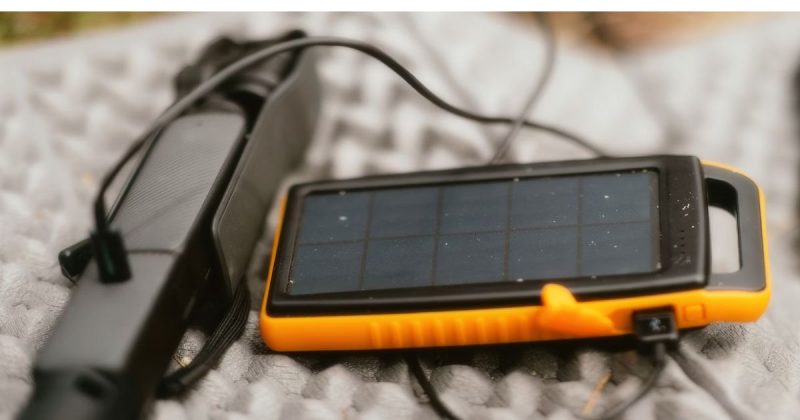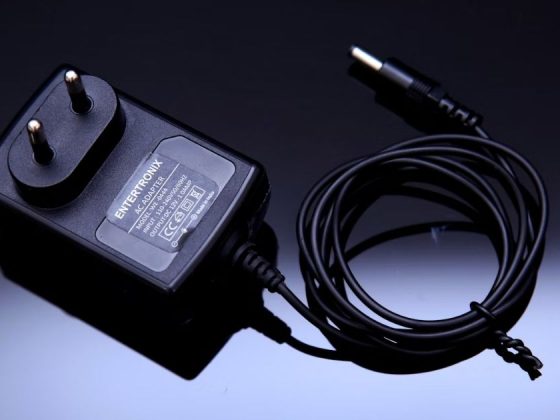Significant advancements have revolutionized solar-powered chargers over the last decade. Previously associated primarily with environmental enthusiasts and minimalist adventurers, these devices have transitioned into widely accepted tools for sustainable energy use. 2025 marks a promising phase for emerging innovations, indicating a future in which solar energy becomes an integrated part of daily living rather than a specialized alternative. As solar technology advances, the distinction between design and functionality diminishes, paving the way for more accessible, efficient, and visually appealing sustainable energy solutions across personal wearables, residential spaces, and workplaces. As a result, solar chargers are increasingly positioned as a practical and eco-friendly alternative to conventional grid-dependent power sources.
The Rise of Solar Charging Technology
Solar charging technology has progressed significantly from its early iterations. Initial models were often bulky, inefficient, and limited in practical use, serving more as experimental tools than reliable power sources. Recent developments in photovoltaic cell design, energy conversion efficiency, and lightweight materials have reshaped the functionality and appeal of solar chargers. Modern versions offer a streamlined, portable, and highly efficient solution, increasingly recognized as essential components of everyday tech gear rather than niche alternatives.
Looking ahead, the evolution is only gaining momentum. By 2025, solar panels are expected to achieve efficiency levels exceeding 25%, representing a significant improvement from just a few years ago. That means faster charging and improved performance, even in less-than-ideal sunlight conditions. Tech brands are also getting clever, integrating innovative features like overcharge protection, adaptive charging, and internal batteries that store solar energy for use on cloudy days or after sunset. It’s a clear signal that solar charging isn’t just a trend—it’s becoming a more innovative, greener way to stay powered up wherever life takes us.
Why Solar Chargers Matter Now More Than Ever
The global shift toward renewable energy has spotlighted personal energy use. With climate change concerns mounting and grid instability in certain regions, having a solar charger isn’t just about convenience—it’s about preparedness and sustainability.
Solar chargers help lessen dependence on fossil fuels and reduce the use of single-use batteries. They provide a sustainable and economical option over time. For individuals in isolated areas or regions with unreliable power supplies, solar chargers can be a crucial source of energy.
Key Benefits of Solar Chargers
1. Portability
Modern solar chargers are designed with travelers and adventurers in mind. Foldable panels, rugged designs, and lightweight materials make them easy to carry in a backpack or suitcase. Whether hiking the Appalachian Trail or lounging on a beach, solar chargers keep your devices alive without needing an outlet.
2. Efficiency
Today’s best solar chargers convert sunlight into usable energy quickly and reliably. With high-efficiency monocrystalline panels, you can charge devices faster and more consistently than ever, even in partial sunlight.
3. Eco-Friendly Energy
Each watt harnessed from solar power reduces dependence on fossil fuel sources such as coal and natural gas. Solar chargers signify a broader transformation in energy perception—shifting from a fixed, limited commodity to a dynamic and widely accessible resource, mirroring the constant presence of sunlight.
4. Versatility
Solar chargers can energize far more than just smartphones. With options available for laptops, cameras, Bluetooth speakers, and even mini refrigerators, today’s chargers are versatile enough to support a variety of lifestyles and needs.
5. Emergency Readiness
From natural disasters to simple power outages, a solar charger ensures you’re always equipped with a way to communicate or access vital information. They’re an essential part of any emergency kit.
Best Solar Chargers for 2025
1. Anker PowerPort Solar Lite
The Anker PowerPort Solar Lite remains a crowd favorite in 2025, thanks to its balanced affordability, performance, and portability. Weighing less than a pound and folding down to the size of a notebook, this model is perfect for campers, hikers, and frequent travelers. It features dual USB ports and innovative charging technology that adjusts output to suit the connected device.
- Power Output: 15W
- Weight: 12 oz
- Ports: 2 USB-A ports
- Special Features: Foldable design, smart charging, weather-resistant
While it’s not designed to power laptops or large devices, it excels at keeping phones and small tablets juiced up while you’re on the move.
2. Goal Zero Nomad 20 Solar Panel
The Goal Zero Nomad 20 is a more robust option for charging larger or multiple devices. Its modular design lets you pair it with portable power stations or use it stand-alone. Built to survive harsh environments, it’s water-resistant and can be chained with other panels for even more power.
- Power Output: 20W
- Weight: 2.3 lbs
- Ports: USB-A, 8mm output
- Special Features: Rugged design, chaining capability, integrated kickstand
Ideal for photographers, campers, and van lifers, the Nomad 20 is as versatile and rugged as solar chargers come.
3. BigBlue 28W Solar Charger
One of the fastest chargers on the market, the BigBlue 28W model boasts four solar panels and can charge up to three devices simultaneously. Despite its power, it folds to a manageable size and features a digital ammeter to precisely measure the amount of energy you’re generating from the sun.
- Power Output: 28W
- Weight: 1.3 lbs
- Ports: 3 USB-A ports
- Special Features: Water-resistant, built-in ammeter, fast charging
It’s ideal for tech-savvy users who carry multiple devices and want a reliable, speedy charge without having to hunt for power outlets.
What to Look for in a Solar Charger
Choosing the right solar charger depends on how you plan to use it. Here are some factors to consider:
1. Power Output
Look for wattage that matches your device’s requirements. Phones typically require 5- 10W, tablets 10- 15W, and laptops 20W or more.
2. Number of Ports
Multiple USB ports are helpful if you want to charge more than one device simultaneously. Look for chargers that offer USB-A, USB-C, or DC outputs.
3. Portability
If you’re backpacking, weight and size are crucial considerations. Choose foldable, lightweight options that offer plenty of don’t power.
4. Durability
Solar chargers used in outdoor environments must be water-resistant and constructed from durable materials. Some panels have reinforced edges or protective covers.
5. Integrated Battery
Some solar chargers include a built-in battery pack, allowing you to store power when the sun is not available. These are especially useful in variable weather conditions.
Solar Chargers and the Environment
The environmental benefits of solar chargers extend far beyond simply reducing fossil fuel consumption. These compact, sun-powered devices contribute to a larger movement toward sustainability by offering a clean, renewable energy source for everyday tech needs. One of their key advantages is minimizing the use of disposable batteries, which are not only costly over time but also contribute significantly to environmental pollution when improperly discarded. By switching to solar chargers, consumers can help reduce e-waste—an increasingly urgent global issue—as fewer electronic accessories end up in landfills.
Moreover, solar chargers play a role in supporting the global shift toward renewable energy. Each purchase reinforces consumer demand for sustainable alternatives, encouraging innovation and investment in clean tech. As solar technology continues to evolve, increased adoption leads to economies of scale, resulting in decreased production costs, improved efficiency, and greater affordability and accessibility for communities worldwide. In this way, choosing a solar charger is not just a personal, eco-conscious decision but part of a broader effort to reshape our energy future for the better.
Innovations on the Horizon
By 2025, companies are exploring the integration of solar charging into everything—from backpacks and jackets to windows and car roofs. Transparent solar panels are one of the most exciting frontiers. These panels are designed to convert sunlight into electricity without obstructing visibility, making it possible to transform windows, smartphone screens, and building facades into energy-generating surfaces. Imagine charging your phone simply by placing it on your windowsill, or having your office window serve as a source of clean energy.
Wearable technology is another rapidly growing category. Engineers are developing flexible, lightweight solar fabrics that can be stitched directly into clothing. Solar-powered jackets, hats, and backpacks may soon feature integrated charging ports for devices like phones and GPS units. These garments won’t just be bright—they’ll be sustainably smart.
AI-assisted solar tracking systems are also gaining popularity. These systems utilize machine learning and onboard sensors to automatically adjust the angle of portable solar panels, maximizing sun exposure throughout the day. Whether camping in the woods or working remotely in a sunny park, these trackers ensure your charger always faces the optimal direction.
Advancements in miniature solar panels are beginning to revolutionize micro-energy thinking in wearables and IoT devices. These tiny panels are now being integrated into the surfaces of smartwatches, earbuds, fitness trackers, and even smart glasses. These upgrades allow for slow, continuous charging throughout the day, significantly extending battery life and reducing the frequency of traditional plug-in charging.
Emerging innovations suggest a future in which solar energy becomes an integral part of daily life, rather than a specialized alternative. As solar technology advances, the distinction between design and functionality diminishes, paving the way for more accessible, efficient, and visually appealing sustainable energy solutions across personal wearables, residential spaces, and workplaces.
The Future of Solar Power is Bright
Solar chargers have transitioned from futuristic concepts to essential tools of today. As demand for energy independence and sustainable options rises, portable solar solutions are gaining popularity. Whether you’re a passionate camper, a digital nomad, or simply looking to keep your phone powered during a blackout, there’s a solar charger to meet your needs.
2025 is poised to be a landmark year for solar technology. With innovation surging forward, there’s never been a better time to invest in clean, portable power. After all, the sun’s not going anywhere—and neither are your devices.





